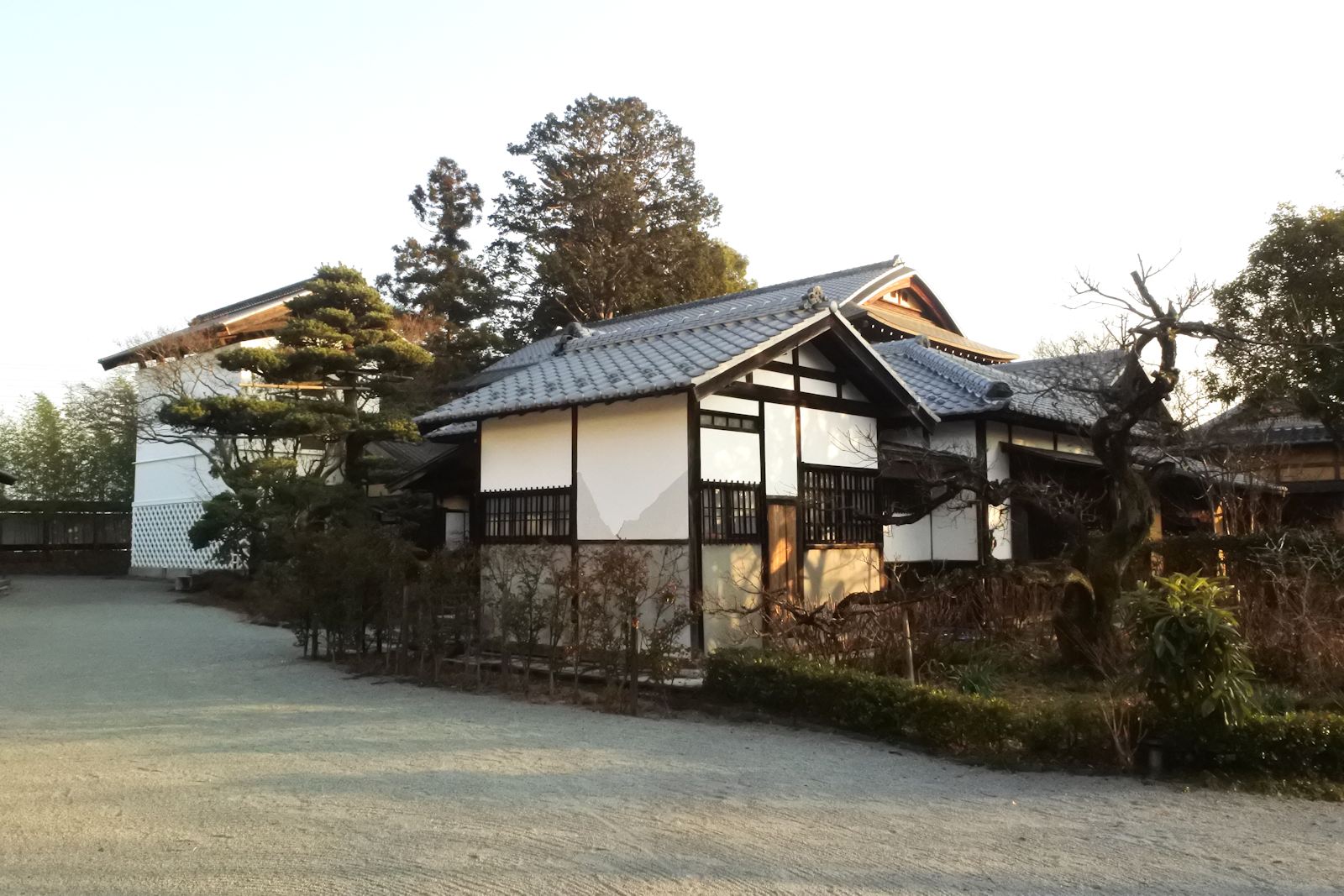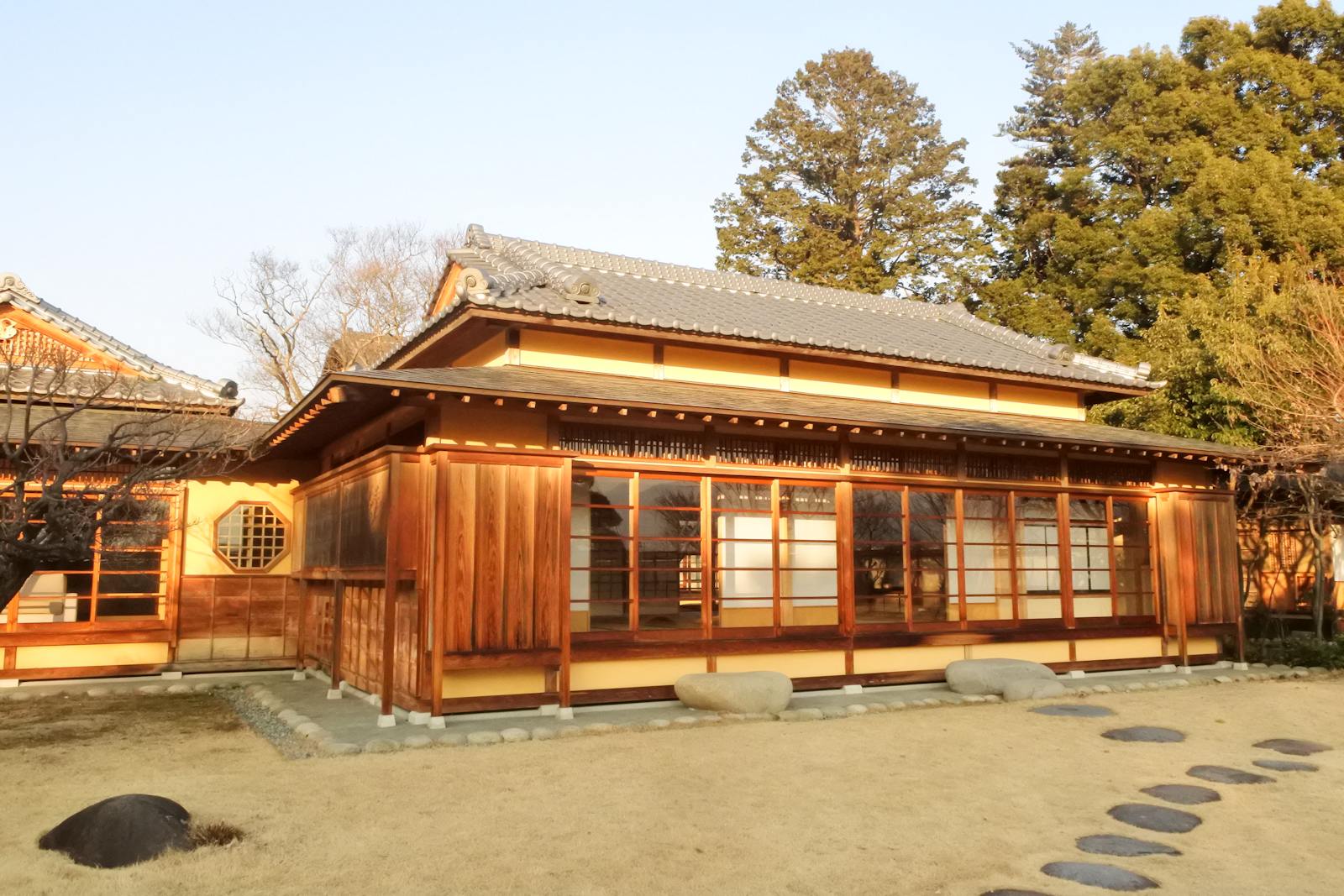
|
|
|
カテゴリ:鉄道日記
 東武鉄道の初代社長を務めるなど、明治から昭和年間にかけて数多くの鉄道事業者の経営に携わったことから、「鉄道王」と呼ばれる根津嘉一郎さんの実家である根津記念館を見学してきた。 根津嘉一郎(1860 - 1940)さんは”甲州財閥”と呼ばれる明治時代に活躍した山梨県出身の実業家の1人で、業績が振るわなかった東武鉄道の経営再建に成功し、日本国内有数の大手民鉄へと成長させた。根津は実業家として、東武鉄道のほか、高野登山鉄道(南海高野線の前身)、武蔵電気鉄道(東急東横線の原型)、東京地下鉄道(東京メトロの前身)、東京馬車鉄道・東京市街鉄道・東京鉄道(以上3社東京都電の前身)などの合わせて24社の鉄道会社や、富国徴兵保険(現在の富国生命保険)、館林製粉(現在の日清製粉グループ本社)、日清紡などの企業の経営に携わった。また、自らの事業で得た儲けを社会にに還元すべきという考えのもと、自らの事業で得た儲けを地元に還元すべきという考えのもと、教育会にも進出し、武蔵大学の創設や、山梨県の学校へのピアノやオルガンの寄贈(これらは「根津ピアノ」「根津オルガン」と呼ばれ、記念館内にも数台が収蔵されている(すべて写真撮影不可))、JR東日本中央本線(中央東線)山梨市駅近くの笛吹川に掛かる根津橋の寄贈などに私財を投じた。 根津さんの実家は甲州平等村(ひらしなむら)、現在の山梨県山梨市にある。記念館は根津の実家を保存・活用した施設で、旧主屋、青山荘、土蔵、展示棟と庭などから成り、根津さんの実業家人生や山梨での暮らしぶりに触れることができる。根津家は「油屋(あぶらや)」という屋号で雑穀商や質屋業を経営していた、地元の豪商であった。 根津家邸宅は根津さんの関与の元、甥の根津啓吉さんにより、1932(昭和7)年から1935(昭和10)年にかけて整備され、故郷での「迎賓館」、大地主根津家の「地主経営の場」、「居住空間」としての機能を併せ持っていたと言われている。2003(平成15)年に根津家から山梨市へと寄贈され、2008(平成20)年10月に現在の根津記念館として一般に公開された。 最初に展示棟で根津さんの生涯・功績についての常設展示を見た。山梨の地に生まれ、地方政治家を経て企業経営者、教育者となるまでの人生を、パネル展示を見ながら知ることができる。 続いてメイン展示となる旧主屋、土蔵と青山荘へ。  旧主屋は2階建てで、1933(昭和8)年に建設された。国の登録有形文化財に指定されている。近代和風なたたずまいの中に、コンクリート布基礎、ボイラー設備、屋内消火栓、電気配線など、当時の先端的な技術が盛り込まれている。 旧主屋の2階の一室には、根津さんが東武鉄道の社長時代に使用していた机と椅子が展示されている。 旧主屋の奥には土蔵が立っており、主屋とつながっている。土蔵も見学可能で、根津家に関する資料を展示している(写真撮影は不可)。  青山荘は残された図面をもとに忠実に復元されたもの。応接室や広間の和室、茶の湯をもてなす茶室などで構成されている。応接室はもともと、神奈川県大磯町にあった根津さんの別荘にあった一室を移築したものだそうだ。青山荘の和室と面した縁側の窓からは、晴れていれば富士山も見ることができる。 展示棟の資料によると、根津は東京の邸宅があった青山(現在の根津美術館)の地にちなんで「青山(せいざん)」という雅号を名乗り、茶人としても活動していた。根津の茶の湯仲間には、「逸翁」こと同じ山梨県出身の”甲州財閥”の一員で阪急電鉄創業者の小林一三さんや、東京急行電鉄初代社長の五島慶太さんなどもいた。 記念館を訪れて、僕は根津家の暮らしがうかがい知れたと共に、昭和初期にタイムスリップして、根津家のお客様としてもてなされたような気持ちにもなった。そして展示棟の資料を通して、根津さんが経営に携わった企業の数の多さに改めて驚きを覚えたと共に、ピアノやオルガン、根津橋の寄贈など、根津の郷土愛に感動した。 I also visited Kaichiro Nezu Memorial Museum, which uses his parents' house in Hirashina Village, present Yamanashi City, Yamanashi Prefecture. Kaichiro Nezu (1860 - 1940) is one of well-known Japanese businessperson during late 19th century early 20th century and had managed many companies, such as Tobu Railway, Koya Tozan Railway (predecessor of Nankai Koya Line), Musashi Electric Railway (Origin of Tokyu Toyoko Line), Tokyo Horse-drawn Streetcar, Tokyo Inner City Railway, Tokyo Railway (predecessor of Bureau of Tokyo Metropolitan Transportation Tramways), Tokyo Underground Railway (predecessor of Tokyo Metro Ginza Line), and totally 24 railway companies, and Fukoku Mutual Life Insurance Company, Tatebayashi Flouring Mill (present Nisshin Seifun Group), and Nisshinbo, and more. He also had a spirit that the earn from his own business were use to to society, from which he established Musashi University, presented pianos or organs to primary schools in Yamanashi Prefecture (the instruments are called "Nezu Piano" or "Nezu Organ" and some of them are exhibited in the museum (photographing all of them isn't allowed)), and put in his money to build Nezu bridge over Fuefuki River and near Yamanashi-shi Station on JR East Chuo Main Line (Chuo East Line). His parents had been business tycoon and had run pawnshop and dealt in grain. The museum had been designed by consists of main building, Seizan-so, Tsuchikura storehouse, exhibition hall, and garden, and you can learn his life as a businessman and feel that in Yamanashi. These houses are designed by his nephew, Keikichi Nezu, and Nezu himself and it is said that they functioned as not only the living space, but also the guest palace and the office as a landowner. The houses and land had been donated to Yamanashi City in 2003 and the museum opened on October 11th, 2008. First, I saw exhibition hall, where the diagrams and photographs showing his life regularly exhibited. The main building are two-storied Japanese-style house built in 1933 and designated as a National Cultural Asset. It equips concrete basement, boiler, indoor fire hydrant, and electric outlets, and tatami-matted rooms, kitchen with furnaces and basement pantry, and more rooms are laid out. His desk and chair he used when he had been the president of Tobu Railway are exhibited in a room on first/second floor. Tsuchikura storehouse stands over and the main building, in which the documents depicting Nezu family are exhibited (photographing isn't allowed). Seizan-so, which connects to the main building , is faithfully restored based on its original design and guests had been entertained at parlor in the building. Over the building, a tea-ceremony room are standing. The parlor in Seizan-so had been reconstructed from that of his second home in Oiso, Kanagawa Prefecture. According to the explanation in exhibition hall, he called himself "Seizan" after where he lived in Tokyo, Aoyama, Minato-ku, Nezu Museum is located in the present, when he used to be in the ceremony, and many businesspersons, such as Ichizo Kobayashi, the founder of Hankyu Railway and also coming from Yamanashi Prefecture, and Keita Goto, the first president of Tokyu Corporation, had spent time with him. While seeing the museum, I felt as if I slipped back in time to early Showa period when the buildings constructed and invited and entertained by him, and through the exhibits in exhibition hall, I was surprised at the number of the companies he had managed and moved his love to his hometown; he donated pianos or organs to primary schools (the instruments are called "Nezu Piano" or "Nezu Organ" and some of them are exhibited in the museum (photographing all of them isn't allowed)) and Nezu bridge over Fuefuki River and near Yamanashi-shi Station on JR East Chuo Main Line (Chuo East Line). 参考文献 Reference
お気に入りの記事を「いいね!」で応援しよう
最終更新日
May 4, 2018 12:44:26 PM
コメント(0) | コメントを書く
[鉄道日記] カテゴリの最新記事
|